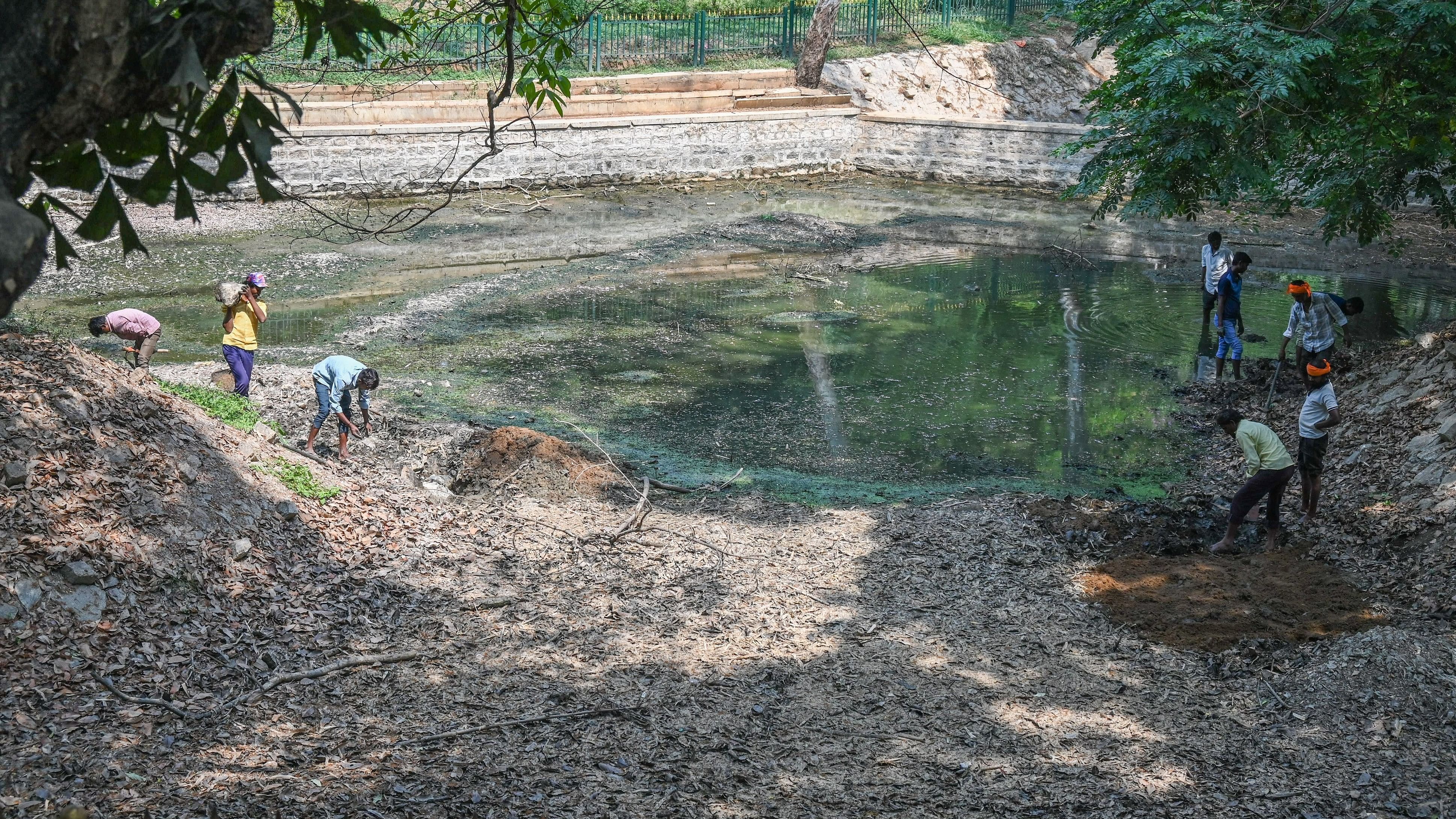
In March, workers cleaned the dry lake at Cubbon Park to prepare for monsoon rainwater collection.
Credit: DH Photo/ S K Dinesh
Bengaluru: While the city suffers the double brunt of extreme heat and water scarcity, experts have echoed that green cover is pivotal to fighting both. Despite the challenges, efforts are being made to keep the remaining parks alive.
Although known as the Garden City, Bengaluru’s green cover has decreased from 68 per centin 1973 to less than 3 per cent in 2023, according to the Bangalore Urban Information Centre, a public information system by the Indian Institute of Science (IISc).
Two of the largest surviving lung spaces of the city- Lal Bagh and Cubbon Park are 240 acres and 197 acres in size, respectively and require large amounts of water for irrigation. Speaking to DH, Dr M Jagadeesh, Joint Director of Horticulture (Parks and Gardens), Lalbagh, who manages the two parks, shared, “We have a network of more than 1,000 automated sprinklers across both the parks. At a time, 20 sprinklers run and irrigate the park”.
He added that to save water, treated water from the park’s in-house treatment plant is used to irrigate it. Claiming that such sprinkler irrigation system is economical, saving both money and water, he said, “Compared to traditional modes of irrigation, pop-up sprinkler irrigation saves close to 60 per cent of the water”.
While the State Department manages the two premium lung spaces, there are close to 1270 other parks managed by the Bruhat Bengaluru Mahanagara Palike (BBMP) across the city.
Speaking to DH, MR Chandrashekhar, Deputy Director, BBMP Horticulture Department, shared, “We have approximately 800 borewells to draw water for the parks, but some of them have dried up. It is getting difficult to manage parks, but we are trying to manage with tanker water, treated water and other sources such as zones with excess water”.
Home gardens
Even residents are doing their part to save water while sustaining their gardens.
Vinod Reddy, a resident of Horamavu said, “I installed a clock-monitored automatic drip irrigation for my terrace garden six months ago, and it has helped me save water and extra work. There are 44 points in and it easily covers about 100 pots. However, there are some pots need extra water. “I’ve used a timer-based watering of plants where the speed of water can be adjusted, based on need. Excess watering will generate fungus and plants will die or might not grow as expected but with this drip - zero pesticide required to remove water fungus and the pots will be clean,” explains Vinod. Aspiring to build a vertical garden next, he built the system independently, learning from YouTube.
Claiming that drip water irrigation can save up to 60 per cent of water, B.N Prasad, Joint Director of Horticulture (Drip Irrigation), Lalbagh, explained while small plants need only 90 to 100 ml water, people tend to flood it, which can be avoided using drip irrigation.